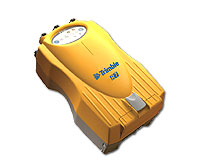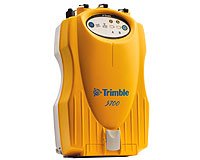Trimble R7/5700 Resource Page
Trimble R7/5700 Resource Page
| Back to receiver comparison page |
Receiver |
GNSS ? |
Available as special buy |
Available on loan |
Serviceable at UNAVCO |
File Size (24 hr, 15 s) |
Memory |
Time lasts recording at 15 s |
Power draw w/ antenna |
Time lasts on 18amphr battery |
 |
Trimble R7 |
N |
N |
Y |
Y |
1 MB |
128 MB - 2 GB CF card |
4 mo. - 5.5 years or 512 files |
3.7 W |
2 days |
 |
Trimble 5700 |
N |
N |
Y |
Y |
1 MB |
128 MB - 2 GB CF card |
4 mo. - 5.5 years or 512 files |
2.5 days |
The 5700 and R7 receivers are very similar and are almost interchangeable. Significant differences are noted here. Because it is low-power, lightweight, can accommodate internal batteries, and is programmable via a survey controller, the 5700/R7 is ideal for kinematic surveys and campaign work in general.
Program using Trimble software for Windows systems (GPS Configurator, Configuration Toolbox), Trimble R-Utilities for a Windows, LINUX, or Solaris system, or a Trimble survey controller. Note: The survey controllers are not backwards compatible. The TSC1 controller must be used with the 5700 receiver. The TSC1, TSCe, or TSC2 controllers can be used with the R7 receiver.
Download directly off the removeable compact flash card, using Trimble Data Transfer Utility for Windows systems, or using Trimble R-Utilities for a Windows, LINUX, or Solaris system.
Data stored on a removeable compact flash card. Note that a maximum of 512 files can be stored, regardless of file size.
No screen; LED lights indicate operating mode.
512 file limit for file storage, regardless of file size.
Accomodates internal batteries.
Trimble Resources
Software
Trimble Configuration Toolbox
Configure the receiver from a Windows system.Trimble GPS Configurator
Configure the receiver or view the current receiver settings, and satellite tracking and signal strengths from a Windows system.Trimble Data Transfer Utility (v1.47)
Download data from various devices including Trimble R7s, 5700s, and survey controllers onto a Windows system.Trimble R-Utilitites
Remotely control receivers from Windows, LINUX, or Solaris systems. No longer supported by Trimble.Trimble runpkr00
Extract .DAT or .TGD files from R00/T00/R01 files on Windows, LINUX, or Solaris systems.Trimble Convert to RINEX Utility
Convert .DAT, .T00, or .T01 files to RINEX version 2.10, 2.11, or 3.00 formats.
Configuration files
The Trimble default configuration file
Trimble’s default 5700/R7 configuration file remains on the receiver through its lifetime and cannot be erased. A hard reset of the receiver will erase any added configuration files but the factory default file remains and becomes the active configuration file. The default file configures the receiver with the following settings:Elevation mask: 13 degrees
Logging interval: 15 seconds
Minimum SVs: 4
File duration: none
[No automatic data logging]
This configuration creates one continuous data file. Data logging must be initiated manually by pressing the data logging button on the receiver. This is a potential problem for remote sites that may suffer intermittent power loss, as with a solar panel.
UNAVCO standard configuration file (.cfg)
The UNAVCO standard configuration file is loaded onto each 5700 or R7 receiver and is the active configuration file unless recipients of loaned UNAVCO equipment request otherwise. The UNAVCO standard configuration file programs the receiver with the following settings:Elevation mask: 5 degrees
Logging interval: 15 seconds
Minimum SVs: 1
File duration: 24 hours (creates daily files)
Automatically start logging data upon power-up
This configuration creates daily (24 hour) data files starting and ending at 0:00:00 UTC. The receiver automatically starts logging upon power-up, which is important for remote sites that may lose power, e.g. at night, but regain power, e.g. in the day once the solar panel has charged the battery bank.
How To’s and FAQ
How to configure the receiver using Trimble Configuration Toolbox software
How to verify receiver tracking using Trimble GPS Configurator software
How to execute a post-processing kinematic (PPK) survey from start to finish
How to execute a real-time kinematic (RTK) survey from start to finish
How to download a Trimble receiver using the Trimble rfile program
How to process fast-static and post-processing kinematic surveys in Trimble Geomatics Office (TGO)
Firmware
Check the firmware expiry date (pdf) to see which firmware version can be installed under the terms of your warranty.